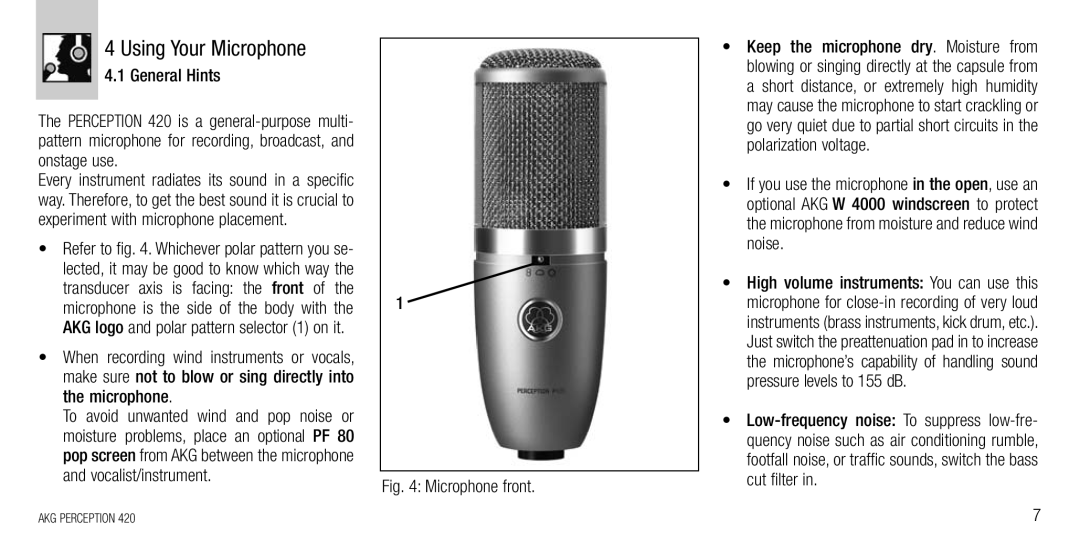
4 Using Your Microphone
4.1 General Hints
The PERCEPTION 420 is a
Every instrument radiates its sound in a specific way. Therefore, to get the best sound it is crucial to experiment with microphone placement.
•Refer to fig. 4. Whichever polar pattern you se- lected, it may be good to know which way the transducer axis is facing: the front of the microphone is the side of the body with the AKG logo and polar pattern selector (1) on it.
•When recording wind instruments or vocals, make sure not to blow or sing directly into the microphone.
To avoid unwanted wind and pop noise or moisture problems, place an optional PF 80 pop screen from AKG between the microphone and vocalist/instrument.
1 ![]()
Fig. 4: Microphone front.
•Keep the microphone dry. Moisture from blowing or singing directly at the capsule from a short distance, or extremely high humidity may cause the microphone to start crackling or go very quiet due to partial short circuits in the polarization voltage.
•If you use the microphone in the open, use an optional AKG W 4000 windscreen to protect the microphone from moisture and reduce wind noise.
•High volume instruments: You can use this microphone for
•
AKG PERCEPTION 420 | 7 |
